What is the atomic number of helium?
1
2
3
4
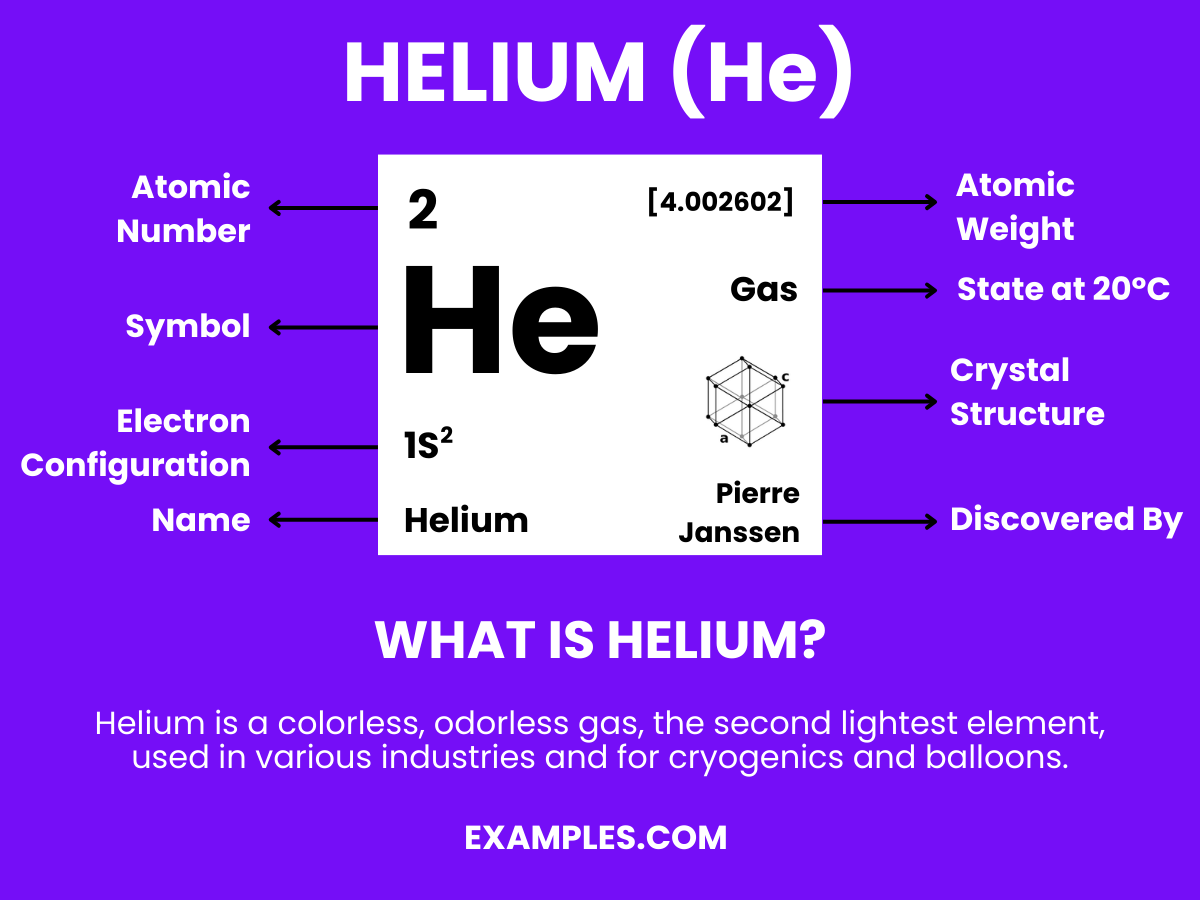
Helium, lighter than air and second only to hydrogen in the universe, is not just for balloons! This comprehensive guide delves into Helium’s fascinating journey from the Big Bang to high-tech industries today. Teachers, equip yourself with engaging examples and understand how Helium floats above the rest in both chemical uniqueness and practical application. Enhance your lessons with the science of Helium, its safe use, and its critical role in research and technology.
Helium – A noble gas with the chemical symbol He and atomic number 2, Helium is renowned for its inertness and lighter-than-air properties. It’s the second most abundant element in the universe, primarily formed through nuclear fusion in stars. In its earthly applications, Helium is critical in various fields, from scientific research and medical technologies to party balloons and deep-sea diving. Its low boiling point and non-reactivity make it indispensable in cryogenics and as a protective atmosphere for arc welding. Helium is a cornerstone in understanding the universe’s workings and a vital tool in modern technology.
| Neon |
| Argon |
| Krypton |
| Xenon |
| Radon |
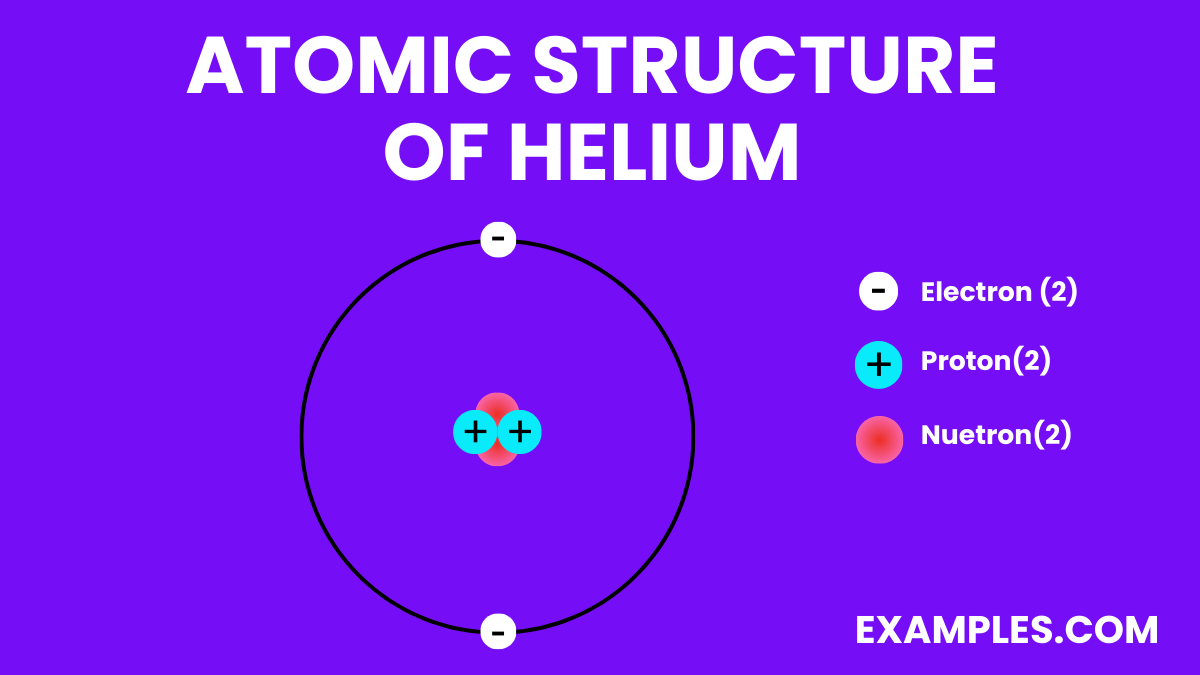
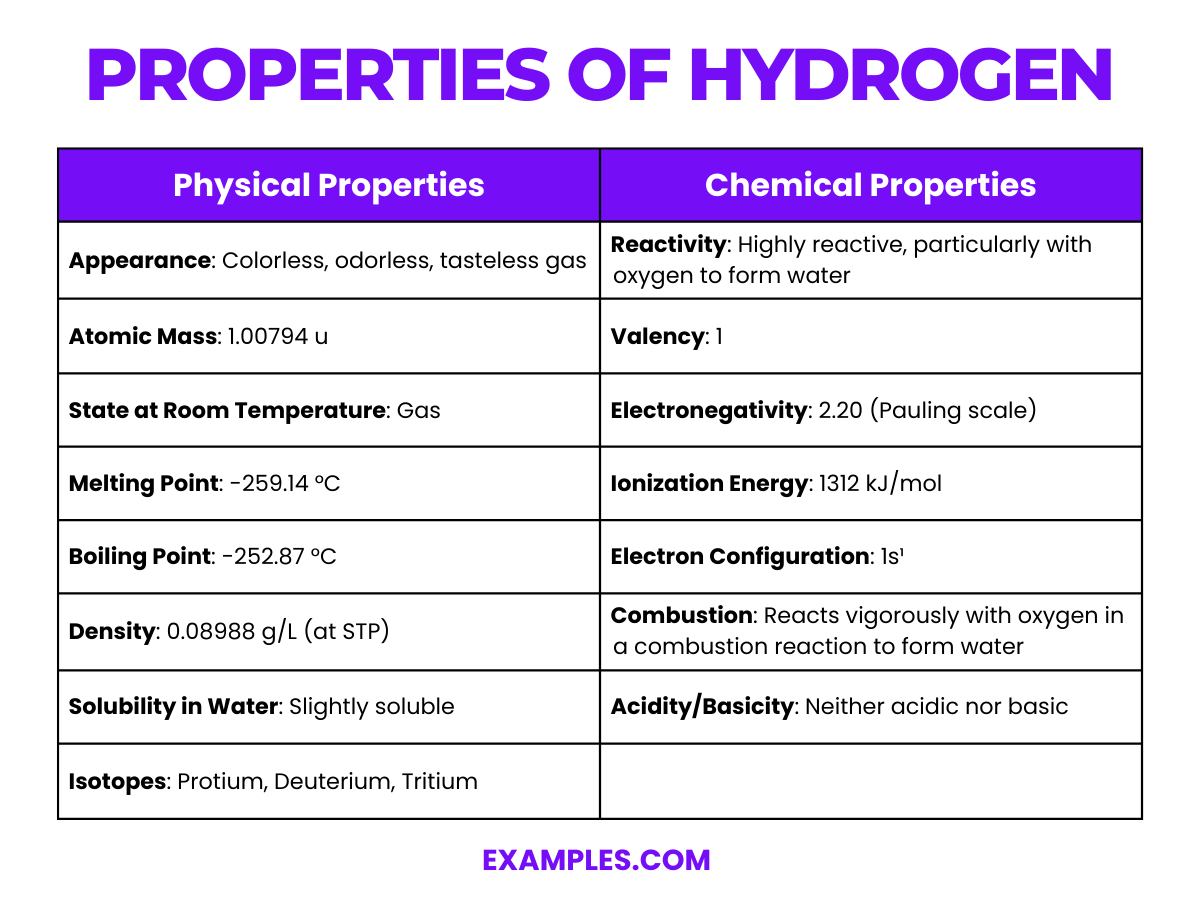
| Property | Description |
|---|---|
| Atomic Number | 2 |
| State at Room Temperature | Colorless, odorless, and tasteless gas. |
| Boiling Point | Very low at -268.93°C (-452.07°F), close to absolute zero. |
| Density | Very light, about 0.1786 grams per liter at STP. |
| Solubility | Practically insoluble in water. |
| Speed of Sound | Approximately 3 times faster in helium than in air. |
| Specific Heat | High specific heat, especially at constant volume. |
| Thermal Conductivity | Excellent conductor of heat, superior to all gases except hydrogen. |
Helium’s chemical properties are dominated by its lack of reactivity, which stems from its complete valence electron shell, making it uniquely suitable for a wide variety of applications, especially where non-reactivity is required. Its physical properties, such as low boiling point and high thermal conductivity, make it ideal for cryogenics and other specialized uses.
| Property | Value |
|---|---|
| Atomic Number | 2 |
| Atomic Weight | 4.002602 g/mol |
| Phase at Room Temperature | Gas |
| Density | 0.1786 g/L (at 0°C, 1 atm) |
| Boiling Point | -268.93°C (-452.07°F) |
| Melting Point | -272.20°C (-457.96°F) at 2.5 MPa |
| Specific Heat Capacity (Cp) | 5.193 J/(mol·K) at 25°C |
| Thermal Conductivity | 0.1513 W/(m·K) at 300K |
| Critical Temperature | -267.96°C (-450.33°F) |
| Critical Pressure | 0.22746 MPa |
| Property | Value |
|---|---|
| Electronegativity (Pauling scale) | Essentially 0 (Helium is a noble gas) |
| Ionization Energy | First: 2372.3 kJ/mol, Second: 5250.5 kJ/mol |
| Refractive Index | 1.000035 (at 0°C, 101.325 kPa for λ=589.3 nm) |
| Property | Value |
|---|---|
| Atomic Number | 2 |
| Atomic Weight | 4.002602 g/mol |
| Electron Configuration | 1s² |
| Covalent Radius | 28 pm |
| Van der Waals Radius | 140 pm |
| Ionization Energies | First: 2372.3 kJ/mol, Second: 5250.5 kJ/mol |
| Property | Value |
|---|---|
| Isotopes | Helium-3 (³He), Helium-4 (⁴He) |
| Natural Abundance | ³He: trace, ⁴He: 99.99986% |
| Nuclear Spin | ³He: 1/2, ⁴He: 0 |
| Magnetic Moment | ³He: -2.12762 nuclear magnetons |
| Stable Isotopes | ⁴He |
| Radioactive Isotopes | ³He (stable in terrestrial conditions but considered a primordial nuclide) |
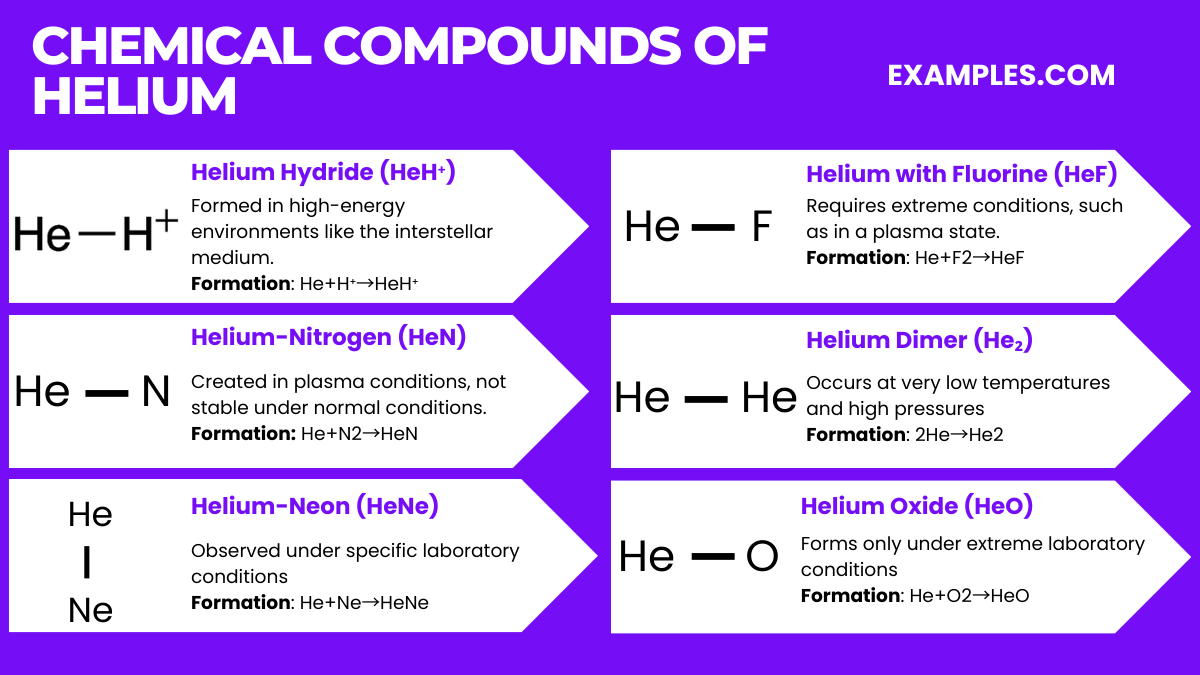
Helium is unique among the elements due to its extreme chemical inertness. As a noble gas with a completely filled valence electron shell, it doesn’t naturally form chemical compounds under standard conditions. However, under extreme conditions, such as very high pressures or in the presence of plasma, it can form exotic compounds. Here are six noteworthy compounds involving helium, although it’s important to note that these are not typically encountered in everyday chemistry:
| Isotope | Atomic Mass | Natural Abundance | Stability | Description |
|---|---|---|---|---|
| Helium-3 (³He) | 3 | Very Rare (~0.0001%) | Stable | Less abundant isotope with one neutron. Used in cryogenics, as a neutron detector, and potential fuel for nuclear fusion. |
| Helium-4 (⁴He) | 4 | Abundant (~99.9999%) | Stable | Most common isotope with two neutrons. Formed in alpha decay of heavier elements and used in cryogenics, as a lifting gas, and in gas chromatography. |
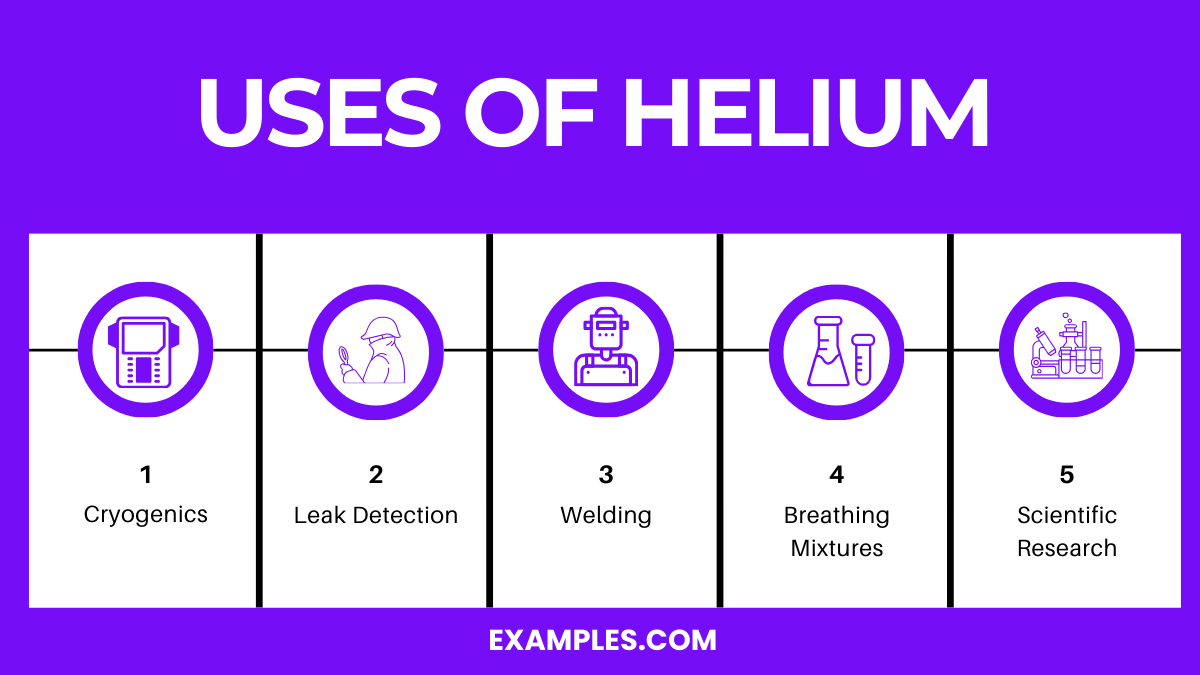
Helium is primarily used in cryogenics, as a lifting gas, in gas chromatography, for leak detection, in arc welding, and in deep-sea diving mixtures.
Yes, helium is a finite resource with increasing concerns about its depletion due to limited reserves and rising demand in various industries.
Helium is formed through natural processes like radioactive decay and nuclear fusion in stars, not by chemical synthesis, making artificial production impractical.
Yes, helium is used as a gas in many applications due to its inertness, including as a protective atmosphere, in balloons, and in scientific research.
Inhaling helium temporarily changes your voice pitch; however, it can be dangerous, causing dizziness, asphyxiation, and in severe cases, death due to oxygen displacement.
Helium is extracted from natural gas reserves where it accumulates over millions of years from radioactive decay of uranium and thorium.
The purpose of helium is diverse: from enabling MRI machines in medicine, lifting balloons, protecting welds, to conducting scientific research due to its unique properties.
Helium serves as an invaluable resource across various fields due to its unique properties. Understanding how to utilize helium effectively is crucial in industries ranging from healthcare to aerospace. As reserves dwindle, appreciating its uses, conserving it, and seeking alternatives become increasingly important. This guide aims to equip you with knowledge and tips to navigate the world of helium efficiently.
Text prompt
Add Tone
10 Examples of Public speaking
20 Examples of Gas lighting
What is the atomic number of helium?
1
2
3
4
Which group of the periodic table does helium belong to?
Alkali metals
Halogens
Noble gases
Transition metals
Helium is the second most abundant element in the universe. Which is the most abundant?
Oxygen
Hydrogen
Carbon
Nitrogen
What is the primary use of helium in everyday applications?
Making fertilizers
Filling balloons
Fuel for cars
Cooling computers
Helium is a gas at room temperature. What state does helium become when cooled below -269°C?
Liquid
Solid
Plasma
Gas
What is the chemical symbol for helium?
H
Hm
He
Hl
Helium is often used in medical applications. Which of the following is a common use of helium in healthcare?
Anesthetic gas
MRI cooling
Dental fillings
X-ray machines
Helium is the lightest noble gas. What property does helium have that makes it suitable for high-altitude balloons?
It is highly reactive
It is flammable
It is less dense than air
It is heavier than air
Helium is not flammable. Which of the following gases is often compared to helium but is highly flammable?
Nitrogen
Hydrogen
Oxygen
Argon
In what form does helium naturally exist in the Earth's atmosphere?
Solid
Liquid
Gas
Plasma
Before you leave, take our quick quiz to enhance your learning!

